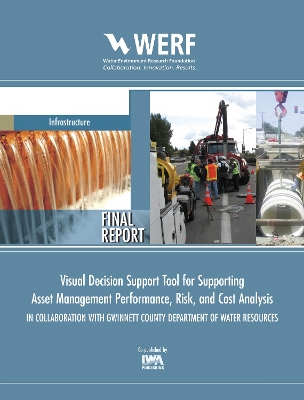WERF Research Report
1 total work
Managing urban water infrastructures faces the challenge of jointly dealing with assets of diverse types, useful life, cost, ages and condition. Service quality and sustainability require sound long-term planning, well aligned with tactical and operational planning and management. In summary, the objective of an integrated approach to infrastructure asset management is to assist utilities in answering the following questions:
Who are we at present, and what service do we deliver? What do we own? Where do we want to be in the long-term? How do we get there?
The AWARE-P approach (www.aware-p.org) offers a coherent methodological framework and a valuable portfolio of software tools. It is designed to assist water supply and wastewater utility decision-makers in their analyses and planning processes. It is based on a Plan-Do-Check-Act process and is in accordance with the key principles of the International Standards Organization (ISO) 55000 standards on asset management. It is compatible with, and complementary to WERF's SIMPLE framework. The software assists in strategic, tactical, and operational planning, through a non-intrusive, web-based, collaborative environment where objectives and metrics drive IAM planning. It is aimed at industry professionals and managers, as well as at the consultants and technical experts that support them. It is easy to use and maximizes the value of information from multiple existing data sources, both in data-rich and data-stressed environments.
This project aimed at testing, validating and tailoring the AWARE-P approach and software in the U.S. wastewater services context; developing new open-source software tools. The project produced:
* A portfolio of tools for the Advanced Water Management and Rehabilitation-Portugal (AWARE-P) software validated at Gwinnett County Department of Water Resources (GCDWR), the main pilot case, and at two other U.S. cases, where a large amount of GIS and inspection data from a major utility, and GIS and operational data from a small utility were extensively explored;
* A new, enhanced version of the tool to assess infrastructure value and support long-term re-investment policies; and
* A new set of tools directed at data mining and condition-based inspection analysis and prediction.
Who are we at present, and what service do we deliver? What do we own? Where do we want to be in the long-term? How do we get there?
The AWARE-P approach (www.aware-p.org) offers a coherent methodological framework and a valuable portfolio of software tools. It is designed to assist water supply and wastewater utility decision-makers in their analyses and planning processes. It is based on a Plan-Do-Check-Act process and is in accordance with the key principles of the International Standards Organization (ISO) 55000 standards on asset management. It is compatible with, and complementary to WERF's SIMPLE framework. The software assists in strategic, tactical, and operational planning, through a non-intrusive, web-based, collaborative environment where objectives and metrics drive IAM planning. It is aimed at industry professionals and managers, as well as at the consultants and technical experts that support them. It is easy to use and maximizes the value of information from multiple existing data sources, both in data-rich and data-stressed environments.
This project aimed at testing, validating and tailoring the AWARE-P approach and software in the U.S. wastewater services context; developing new open-source software tools. The project produced:
* A portfolio of tools for the Advanced Water Management and Rehabilitation-Portugal (AWARE-P) software validated at Gwinnett County Department of Water Resources (GCDWR), the main pilot case, and at two other U.S. cases, where a large amount of GIS and inspection data from a major utility, and GIS and operational data from a small utility were extensively explored;
* A new, enhanced version of the tool to assess infrastructure value and support long-term re-investment policies; and
* A new set of tools directed at data mining and condition-based inspection analysis and prediction.
